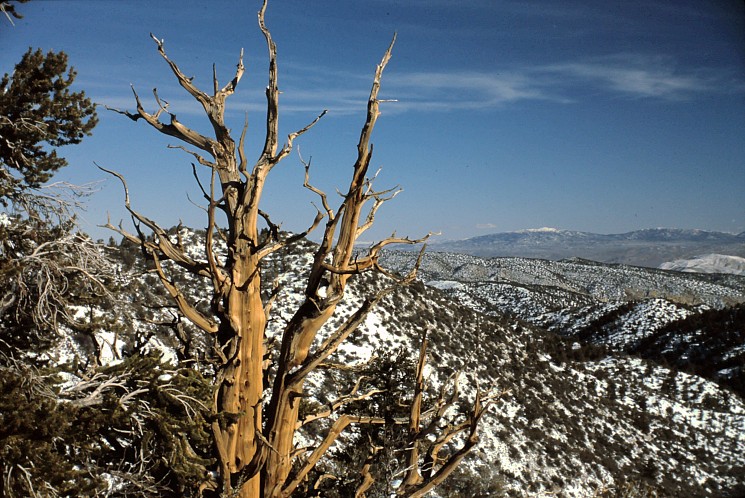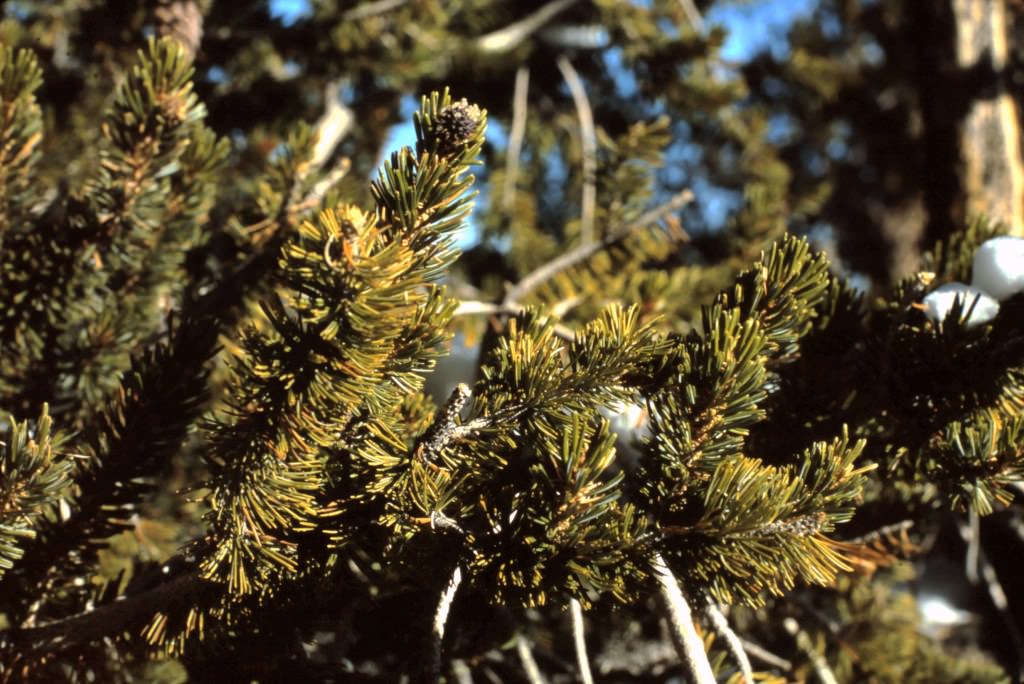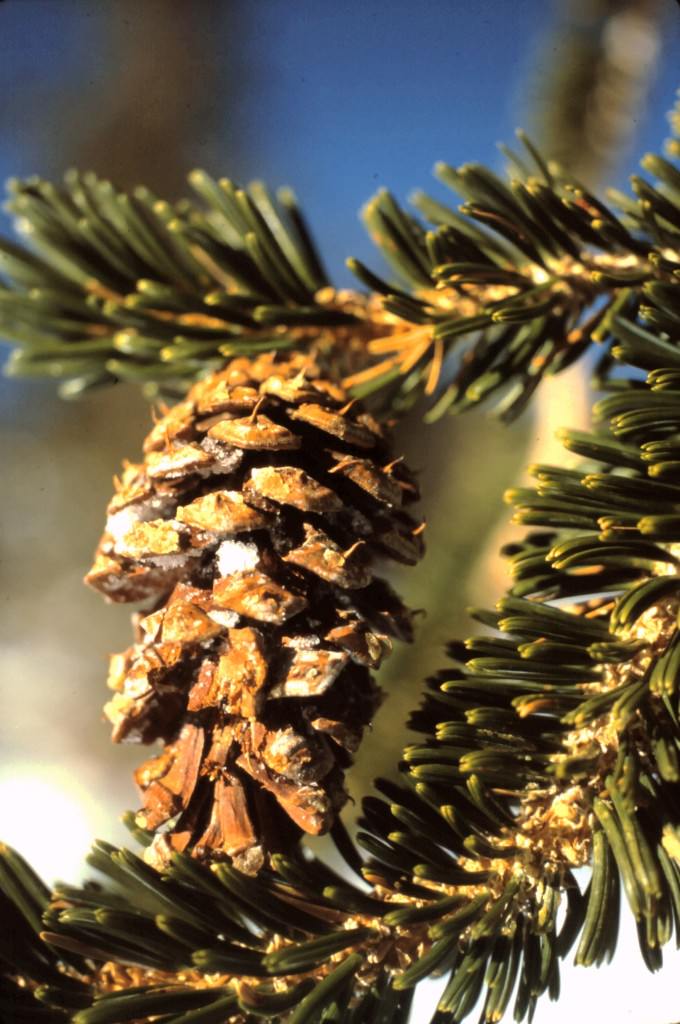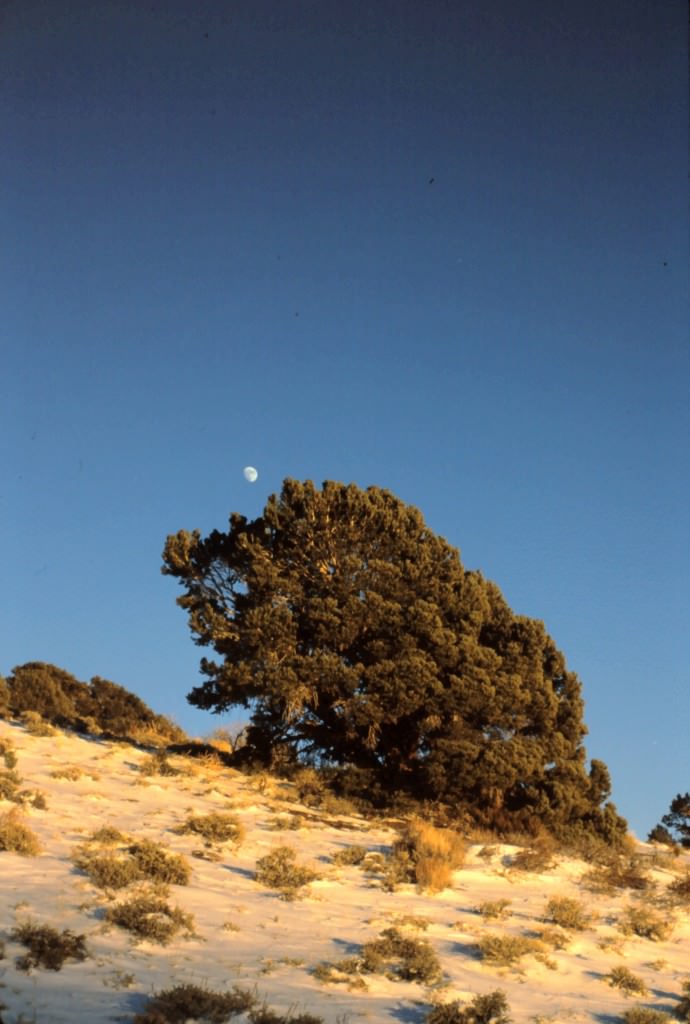Bristlecone Pine, Pinus aristata

Up in the mountains that edge the Great Basin
it was whispered to me
by the oldest of trees.
By the Oldest of Beings
the Oldest of Trees
Bristlecone Pine….
– Gary Snyder
Many visitors to Mount Auburn, come not only to be in the here and now, but also to be conveyed to another place, perhaps across time, that includes significant, even spiritual, memories. Thoughts of loved ones often predominate, but for some, memories also may include flora, or fauna. Recently while stopping here at a Bristlecone Pine, Pinus aristata, I was vicariously, transported to yesteryear, across the United States.

The Bristlecone Pines, are included within a Subsection (group) of the genus Pinus, which holds three closely allied species; Pinus aristata, Pinus longaeva, and Pinus balfouriana. All three are native to the higher mountains of the southwest United States. Pinus balfouriana are native to several disjunct populations in California. Pinus aristata are native to the Rocky Mountains of Colorado, and northern New Mexico, along with a limited population in the Arizona mountains. Pinus longaeva are native to mountain regions of eastern California, Nevada, and to a lesser extent, Utah, typically at elevations above 9,500 feet.

Pinus aristata,
The most famous Bristlecone Pines are found in the White Mountains, of eastern California, now within the Inyo National Forest. These White Mountains are known for their extreme, arid environment. They get approximately a foot of precipitation a year, and most of that comes from winter snowfall. At 10,000 – 11,500-feet elevation, the wind blows almost constantly, annually recording speeds greater than 100 mph, and the temperatures reach freezing six months of the year. It is here, that in the 1950’s, dendrochronologist Dr. Edmund Shulman (1909-1958), located and documented a Bristlecone Pine that was more than 4,600 years old! Dendrochronologists use a devise called an increment borer, to extract thin cross sections from trees. These cross sections provide a record of the tree’s annual growth rings. A refinement of this practice uses a technique called “cross-dating”, which reads ring combinations. Shulman located many trees in the White Mountain-Inyo Forest range that he dated at 3,000-4,000 years old, and they are still alive.

These peaks of the White Mountains are primarily quartzitic sandstone and granitic bedrock, but there are extensive outcrops of calcareous dolomite. Most of the soil here has been abraded, and eroded away. The meager poor soil, extreme aridity, and battering winds, provide a near competition-free habitat for the slow-growing Bristlecone Pines. Some of these trees have been shown to have 100 years of annual growth rings, in only one-inch of trunk diameter. Several evolved survival strategies include, needles living for twenty to forty years, and the gradual death of bark and xylem (water/nutrient conducting vascular tissue). This reduces the amount of annual photosynthetic energy needed to sustain life. Some of the tree dies, so that a small portion may live on. Many of the older Bristlecone Pines exhibit a characteristic “slab growth”, in which a narrow, vertical strip of living bark is maintained on an otherwise massive dead trunk. On such trees, you may need to look carefully to find the living foliage, but it is nonetheless still alive. Some have termed these as huge versions of bonsai. These trees also produce a dense, highly resinous wood that is strongly disease, and insect resistant. This is also why these trees may remain upright for hundreds of years after death.
John Muir (1838-1914), the famous preservation ecologist, and writer, provides this encomium, “While on the roughest ledges of crumbling limestone are lowly old giants, five or six feet in diameter that have braved the storms of more than a thousand years. But whether old or young, sheltered or exposed to the wildest gales, this tree is ever found to be irrepressibly and extravagantly picturesque, offering a richer and more varied series of forms to the artist than any other species I have yet seen.”
On your next visit to Mount Auburn, look for our diminutive Bristlecone Pine, found on Hibiscus Path. But, also bring your imaginativeness, and phantasmagoric wanderlust, as you look at a cousin to Californian trees, which were alive when the Egyptian pyramids were being built, yet continue to live, well into their fifth millennia.









Leave a Reply